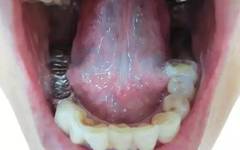Traditional Chinese Medicine (TCM) theory posits that the tongue reflects the physiological functions and pathological states of the five zang organs and six fu organs, indicating the body’s vitality, the depth of pathogenic factors, the nature of pathogenic qi, and the progression and prognosis of diseases. Tongue diagnosis is a crucial aspect of TCM observation and an important clinical tool for disease diagnosis. By observing the tongue’s appearance, practitioners can understand the physiological functions and pathological changes of the human body, which forms the basis for syndrome differentiation and treatment. Numerous studies have found correlations between tongue appearance and common diseases such as coronary heart disease, gastric cancer, and diabetes.
01
Coronary Heart Disease
A study conducted in 2013 by Xinjiang Medical University observed the relationship between the sublingual veins and coronary artery lesions in patients with coronary heart disease. The study categorized the sublingual veins based on their length, thickness, tortuosity, and color. The analysis revealed that:Normal individuals have a light red tongue body, moist with saliva, the mucosa appears transparent, and there are no turbidity, white patches, or pigmentation. There are no signs of stasis such as purple threads, spots, or clots. The frenulum is centered, of moderate length, and the two sublingual veins are only slightly visible, appearing linear without being distended or excessively tortuous, with a length not exceeding 3/5 of the distance from the tongue tip to the sublingual meat mound. The color is light red or light purple, with small, raised meat mounds on both sides of the frenulum.Patients with coronary heart disease show longer, darker, and more tortuous sublingual veins as the number of coronary artery lesions increases.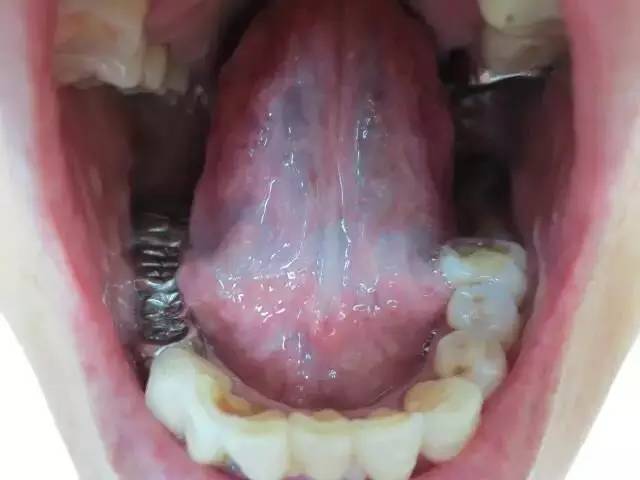
In patients with coronary heart disease, the sublingual veins are long, thick, dark purple, and tortuous.
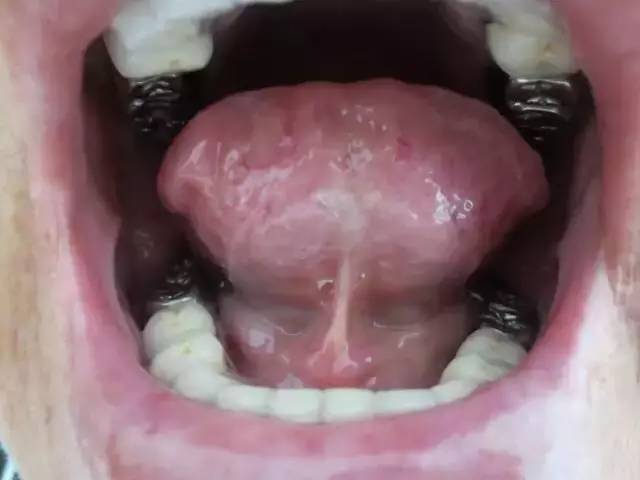 Healthy individuals have short, thin, light purple sublingual veins, with no tortuosity or only slight tortuosity.Why can tongue diagnosis detect coronary heart disease??“The heart governs blood vessels” and “the heart opens to the tongue”; thus, the tongue’s appearance can reveal the internal circulation of qi and blood, allowing for the assessment of the heart’s function in governing blood vessels. When the heart has substantial lesions, blood stasis often leads to corresponding changes in tongue appearance. From a Western medical perspective, atherosclerotic changes in the coronary arteries lead to reduced elasticity of the vessel walls, narrowing of the lumen, and insufficient blood supply and oxygen to the myocardium, resulting in a series of changes in blood rheology and dynamics, which can elevate sublingual venous pressure, causing venous stasis and hypoxia, and increasing blood flow to the tongue, leading to varying degrees of venous varicosities.
Healthy individuals have short, thin, light purple sublingual veins, with no tortuosity or only slight tortuosity.Why can tongue diagnosis detect coronary heart disease??“The heart governs blood vessels” and “the heart opens to the tongue”; thus, the tongue’s appearance can reveal the internal circulation of qi and blood, allowing for the assessment of the heart’s function in governing blood vessels. When the heart has substantial lesions, blood stasis often leads to corresponding changes in tongue appearance. From a Western medical perspective, atherosclerotic changes in the coronary arteries lead to reduced elasticity of the vessel walls, narrowing of the lumen, and insufficient blood supply and oxygen to the myocardium, resulting in a series of changes in blood rheology and dynamics, which can elevate sublingual venous pressure, causing venous stasis and hypoxia, and increasing blood flow to the tongue, leading to varying degrees of venous varicosities.
02
Gastric Cancer
Research has reported observations of the tongue appearance in 114 gastric cancer patients, finding that many exhibited a bluish-purple tongue, pale white tongue, and enlarged tongue, with the tongue coating primarily being white, greasy, or thick and greasy, while the peripheral part of the tongue surface had little or no coating.Gastric cancer patients typically present with a bluish-purple tongue, pale white tongue, and enlarged tongue, with the tongue coating primarily being white, greasy, or thick and greasy, reflecting the pathogenesis of gastric cancer characterized by qi stagnation, phlegm accumulation, blood stasis, heat toxin accumulation, and phlegm-damp obstruction.In particular, the characteristic of the tongue having a thick white coating or thick greasy coating in the middle while the peripheral part has little or no coating further reflects the body’s deficiency of spleen and stomach during the occurrence of gastric cancer, indicating that not only is the spleen unable to perform its function, leading to damp turbidity obstruction, but also that the stomach yin is deficient, making it difficult for the stomach qi to fully rise to the tongue, which is a complex pathological change. In late-stage gastric cancer patients, the peripheral part of the tongue may even exhibit a beef-like appearance with no coating.Another study recorded the tongue appearances and laboratory test indicators of 266 gastric cancer patients and 246 normal controls, finding a close relationship between abnormalities in clinical tests such as white blood cells, lymphocytes, total protein, and the thickness of the tongue coating and serum epidermal growth factor levels in gastric cancer patients.Why can tongue diagnosis detect spleen and stomach diseases?TCM holds that the tongue is closely related to the spleen and stomach.The “Huangdi Neijing” states:“The spleen meridian belongs to the Taiyin, enters the abdomen, belongs to the spleen and connects to the stomach, ascends to the diaphragm, connects to the throat, links to the root of the tongue, and disperses under the tongue.” Ancient physicians often regarded the tongue as the external representative of the spleen and stomach, and the coating as the vapor of the stomach qi, hence the saying “the tongue is the mirror of the stomach.” Gastric cancer falls under the TCM categories of “reflux”, “esophageal obstruction”, “nausea and vomiting”, “epigastric pain”, and “accumulation”. The occurrence and development of gastric cancer is a complex process, often caused by long-term irregular diet, emotional disturbances, internal injuries from overwork, and exposure to external pathogenic toxins, leading to dysfunction of the organs and meridians, damaging the spleen and stomach, resulting in a series of pathological changes such as qi stagnation, phlegm accumulation, blood stasis, and internal toxin accumulation, ultimately leading to the accumulation of masses in the stomach and the formation of gastric cancer. The pathogenesis is based on spleen and stomach deficiency, with qi stagnation, phlegm accumulation, blood stasis, and toxin accumulation as manifestations, indicating a mix of deficiency and excess.
03
Diabetes
Research collected data from 5,930 patients with type 2 diabetes, describing the tongue appearance based on five aspects: tongue quality, tongue body, sublingual veins, coating color, and coating texture. It was found that Type II diabetes patients often have a thick greasy coating, yellow coating, and a swollen tongue, with many showing signs of stasis at the tongue’s base.Correlation analysis revealed that the thickness of the tongue coating varies with blood sugar levels, indicating that the tongue coating can reflect the patient’s blood sugar levels, which in turn reflects the state of phlegm-damp accumulation in the body; the color of the tongue quality deepens with increasing blood lipid levels, suggesting that higher blood lipids correlate with more severe blood stasis; the degree of stasis in the sublingual veins correlates positively with the patient’s age, indicating that the worsening of stasis in the sublingual veins is a long-term effect, reflecting the qi and blood circulation status over an extended period.Why can tongue diagnosis detect diabetes?
Currently, type 2 diabetes is primarily characterized by phlegm-damp accumulation and internal heat. The reasons are related to the fast-paced lifestyle of modern society and diets high in protein and sugar, leading to long-term nutritional excess, overburdening the spleen and stomach, which cannot fully transform and transport nutrients, resulting in accumulation that eventually transforms into phlegm-damp, filling the body and potentially developing into diabetes.As stated in the “Suwen: Discussion on Rare Diseases”:“This is the overflow of the five qi, known as spleen dampness… This is where obesity arises, and such individuals must frequently consume sweet and fatty foods.Obesity generates internal heat, while sweetness leads to fullness, causing qi to overflow, resulting in thirst.”
The color of the tongue coating, from light to dark, can reflect the severity of heat symptoms, and to some extent, it also reflects the severity of the patient’s condition. The patient’s age, body mass index, and blood lipid levels are positively correlated with the depth of the coating color, indicating that as age increases, the righteous qi gradually weakens, and the condition may progressively worsen.
04
Expert Tongue Diagnosis Experience
1) Observe the tongue coating not only for color but also for its shapeIn clinical practice, when examining the tongue coating, attention should be paid not only to the lightness or heaviness of the coating color and the thickness or thinness of the coating texture but also to the distribution pattern, range, and sparsity of the coating. Based on the principle of “coating reflects qi disease”, it is noted that if the distribution of the tongue coating is uneven or varies in thickness, it may indicate stagnation of qi. 2) The presence of prickles indicates stagnation, thus relating to heat diseasesPrickles appear red, rooted in the tongue body, but are raised like tongue coating, thus indicating both qi and blood diseases. Generally, the more severe the pathogenic heat, the larger the prickles, which are often associated with excess fire. If the prickles are fine and slightly raised on the tongue surface or hidden within the tongue body, they are often associated with deficiency fire. If fire is rampant or damp heat is intense, prickles may not necessarily appear, but the entire tongue may be red. 3) Observe both the tongue coating and tongue quality to clarify the disease conditionIn clinical practice, it is common to see uneven dark red and light red tongue qualities, which may indicate a loss of balance in the blood. If the light red tongue is uneven, it is prone to develop into a dark red tongue, indicating disease progression; if the tongue surface is uneven and lacks smoothness, with both the tongue coating and tongue quality involved, it is considered a sign of disharmony between qi and blood.In summary, to differentiate between deficiency and excess based on tongue appearance, if the tongue quality is firm and aged, regardless of whether the coating is yellow, white, gray, or black, the condition is often associated with excess; if the tongue quality is swollen, soft, and tender, regardless of the coating color, the condition is often associated with deficiency. To treat diseases, one must examine the tongue coating, while assessing the prognosis of the disease is related to the tongue quality. The tongue coating can indicate the depth of the six excesses, while the tongue quality can reflect the deficiency and excess of the five zang organs. Regardless of the color of the tongue coating, it is generally easy to treat; however, once the tongue quality changes, it is essential to assess the condition’s progression and severity. The tongue body should ideally be soft and radiant, not stiff and dark; softness and radiance indicate that qi and fluids are nourishing, even if symptoms are complex, the organs are not weakened; stiffness and darkness indicate that the vessels are deprived of nourishment, with wind and phlegm obstructing, indicating a severe and dangerous condition.
Precious Tongue Diagnosis Atlas
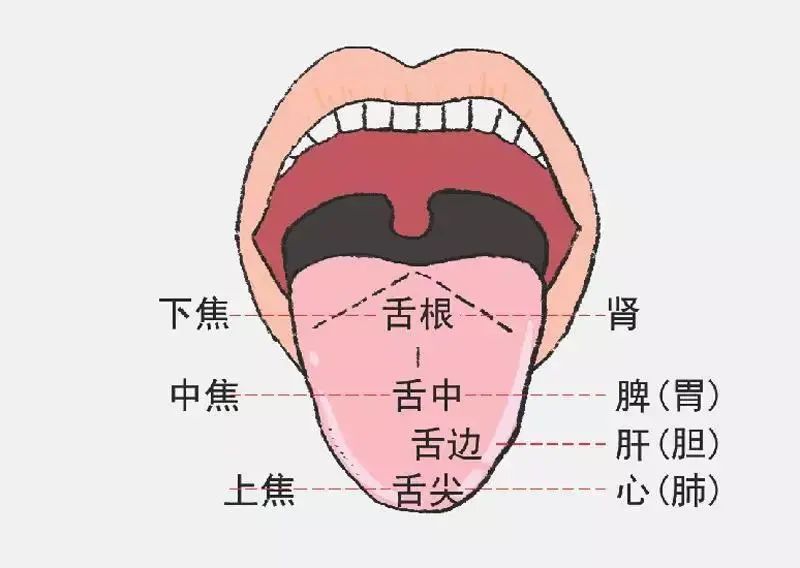
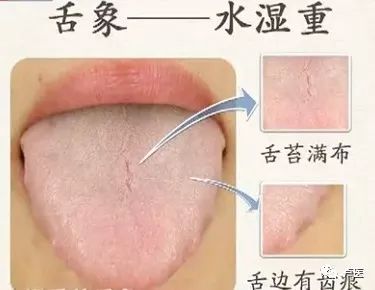 (1) Physical manifestations: facial (eyelid) swelling, oily skin, prone to acne, diarrhea, heaviness and fatigue, dry and hard stools, irritability and anger. (2) Causes: qi deficiency, lack of exercise, consumption of cold drinks, leading to water dampness retention in the body. (3) Solutions: 10 grams each of red beans and coix seeds, boiled in water for 30 minutes, to be consumed as tea to dispel dampness, suitable for summer. In winter, for cold dampness, use green Sichuan pepper to boil water for foot baths.
(1) Physical manifestations: facial (eyelid) swelling, oily skin, prone to acne, diarrhea, heaviness and fatigue, dry and hard stools, irritability and anger. (2) Causes: qi deficiency, lack of exercise, consumption of cold drinks, leading to water dampness retention in the body. (3) Solutions: 10 grams each of red beans and coix seeds, boiled in water for 30 minutes, to be consumed as tea to dispel dampness, suitable for summer. In winter, for cold dampness, use green Sichuan pepper to boil water for foot baths. 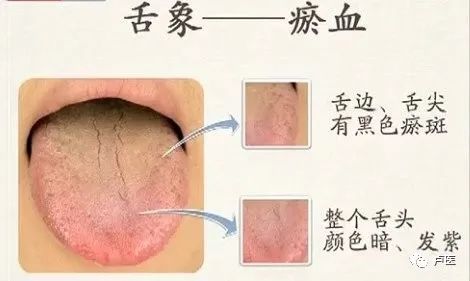
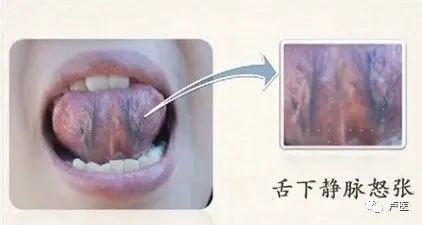 (1) Physical manifestations: forgetfulness, dry throat, irritability, dry skin, body pain, dark complexion, black lips, dark circles, dysmenorrhea. (2) Causes: poor blood circulation, trauma, emotional stress (liver qi stagnation can easily lead to blood stasis), qi deficiency, cold exposure. (3) Solutions: 0.5 grams each of notoginseng and American ginseng, powdered and taken with warm water.
(1) Physical manifestations: forgetfulness, dry throat, irritability, dry skin, body pain, dark complexion, black lips, dark circles, dysmenorrhea. (2) Causes: poor blood circulation, trauma, emotional stress (liver qi stagnation can easily lead to blood stasis), qi deficiency, cold exposure. (3) Solutions: 0.5 grams each of notoginseng and American ginseng, powdered and taken with warm water. 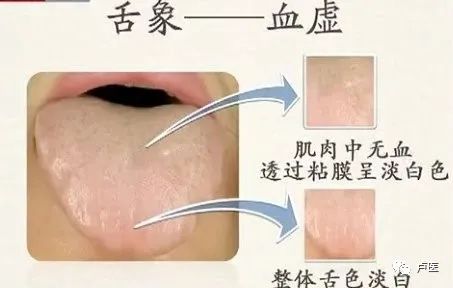 (1) Physical manifestations: poor memory, weak thinking ability, poor sleep, prone to insomnia, easy fatigue, sensitivity to wind and cold, warm hands and feet in hot weather, cold hands and feet in cold weather. (2) Causes: blood loss, poor spleen and stomach function leading to inadequate nutrient absorption, excessive thinking depleting heart and spleen blood. (3) Solutions: 30 grams of American ginseng powdered, 300 grams of longan flesh, mixed and steamed for 4 hours, take one spoon daily with hot water.
(1) Physical manifestations: poor memory, weak thinking ability, poor sleep, prone to insomnia, easy fatigue, sensitivity to wind and cold, warm hands and feet in hot weather, cold hands and feet in cold weather. (2) Causes: blood loss, poor spleen and stomach function leading to inadequate nutrient absorption, excessive thinking depleting heart and spleen blood. (3) Solutions: 30 grams of American ginseng powdered, 300 grams of longan flesh, mixed and steamed for 4 hours, take one spoon daily with hot water. 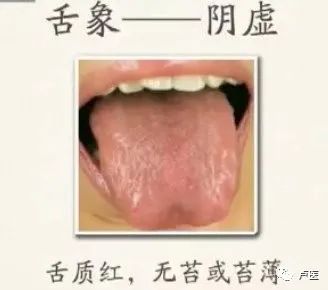 (1) Physical manifestations: dry eyes, dry mouth and throat, heat in palms and soles, dry stools, dizziness and tinnitus, poor sleep, rapid pulse, preference for cold drinks, irritability and anger, soreness in lower back and knees. (2) Causes: insufficient body fluids, staying up late, consuming spicy and excessive heat-inducing foods, or severe illness. (3) Solutions: 9 grams each of rehmannia, adenophora, ophiopogon, and goji berries, 6 grams of dendrobium, 3 grams of angelica, and a section of pig spine, boiled into soup for consumption, effective within a week.
(1) Physical manifestations: dry eyes, dry mouth and throat, heat in palms and soles, dry stools, dizziness and tinnitus, poor sleep, rapid pulse, preference for cold drinks, irritability and anger, soreness in lower back and knees. (2) Causes: insufficient body fluids, staying up late, consuming spicy and excessive heat-inducing foods, or severe illness. (3) Solutions: 9 grams each of rehmannia, adenophora, ophiopogon, and goji berries, 6 grams of dendrobium, 3 grams of angelica, and a section of pig spine, boiled into soup for consumption, effective within a week. 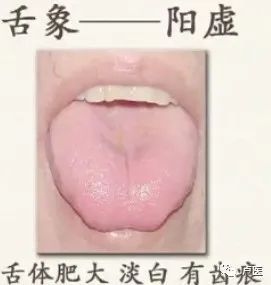 (1) Physical manifestations: sensitivity to cold, preference for hot drinks, lack of energy, excessive sleep, pale lips, hair loss, excessive sweating, thin stools, prolonged clear urination. (2) Causes: excessive consumption of cold medicines, drinking cold beverages, weak constitution, excessive exposure to cold environments. (3) Solutions: 20 grams of angelica, 30 grams of ginger, and 500 grams of lamb, boiled into soup for consumption.
(1) Physical manifestations: sensitivity to cold, preference for hot drinks, lack of energy, excessive sleep, pale lips, hair loss, excessive sweating, thin stools, prolonged clear urination. (2) Causes: excessive consumption of cold medicines, drinking cold beverages, weak constitution, excessive exposure to cold environments. (3) Solutions: 20 grams of angelica, 30 grams of ginger, and 500 grams of lamb, boiled into soup for consumption. 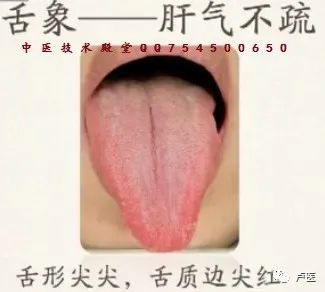 (1) Physical manifestations: depression, bitter and dry mouth, dizziness, poor appetite, alternating chills and fever, irritability, nausea, chest tightness and rib pain, insomnia with vivid dreams. (2) Causes: excessive thinking, high stress (emotional injuries: joy disperses qi, anger raises qi, worry gathers qi, thinking stagnates qi, sadness disperses qi, fear lowers qi, shock disrupts qi). (3) Solutions: 3 grams each of lamp wick grass and bamboo leaves, steeped in water, effective within 3-5 days, primarily used for sudden heat requiring liver qi regulation. Long-term liver qi stagnation requires adjustment of the seven emotions: joy, anger, worry, thought, sadness, fear, and shock. Compassion is the most powerful tool to restrain the seven emotions, as the benevolent live long.Tongue Diagnosis Organs Correspondence Chart
(1) Physical manifestations: depression, bitter and dry mouth, dizziness, poor appetite, alternating chills and fever, irritability, nausea, chest tightness and rib pain, insomnia with vivid dreams. (2) Causes: excessive thinking, high stress (emotional injuries: joy disperses qi, anger raises qi, worry gathers qi, thinking stagnates qi, sadness disperses qi, fear lowers qi, shock disrupts qi). (3) Solutions: 3 grams each of lamp wick grass and bamboo leaves, steeped in water, effective within 3-5 days, primarily used for sudden heat requiring liver qi regulation. Long-term liver qi stagnation requires adjustment of the seven emotions: joy, anger, worry, thought, sadness, fear, and shock. Compassion is the most powerful tool to restrain the seven emotions, as the benevolent live long.Tongue Diagnosis Organs Correspondence Chart 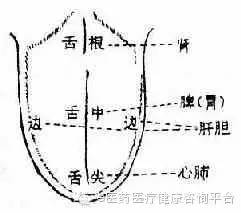 Tongue Diagnosis Organs Correspondence Chart(1) Tongue Color① Pale Tongue: The tongue color is lighter than normal, indicating deficiency syndromes and cold syndromes, often seen in blood deficiency, representing weak yang qi and insufficient qi and blood. A pale and swollen tongue indicates deficiency cold; a swollen tongue with teeth marks on the edges indicates qi deficiency or yang deficiency.② Red Tongue: The tongue color is deeper than normal, appearing bright red, indicating heat syndromes, often associated with internal heat excess. A red tip indicates heart fire; red edges indicate liver and gallbladder heat; a dry red tongue indicates heat injuring fluids or yin deficiency with excess fire.③ Dark Red Tongue: The tongue color is deep red, indicating excess heat, often associated with deep invasion of pathogenic heat into the nutrient and blood levels or excess fire due to yin deficiency.The deeper the red or dark red tongue, the more severe the heat pathogen.④ Stasis Spot Tongue: The tongue has bluish-purple spots or patches, indicating internal blood stasis accumulation.⑤ Bluish-Purple Tongue: The entire tongue appears bluish-purple, indicating either extreme heat or cold syndromes. A deep red and dry tongue indicates extreme heat, while a pale yellow-purple or bluish-purple and moist tongue indicates a cold syndrome.(2) Tongue Shape: Observe the age and tenderness of the tongue quality, as well as its thickness and cracks.① Age and Tenderness: “Old” refers to a rough tongue texture, firm in shape and color, often associated with excess or heat syndromes; “tender” refers to a delicate tongue texture, soft in shape and color, often associated with deficiency or deficiency cold syndromes.② Thickness: “Thick” refers to a swollen tongue, often related to water damp retention. A pale and swollen tongue with teeth marks on the edges often indicates spleen deficiency or kidney yang deficiency with water damp retention; a red and swollen tongue often indicates internal damp heat or excessive heat toxin. “Thin” refers to a small and thin tongue, often associated with deficiency syndromes. A pale and thin tongue often indicates insufficient qi and blood; a red and dark thin tongue often indicates internal heat due to yin deficiency.③ Prickles: Tongue papillae are enlarged and protruding, often associated with excessive heat. The more severe the heat pathogen, the larger and more numerous the prickles. Clinically, prickles are often seen on the tongue tip and edges, with prickles on the tongue tip often indicating excessive liver and gallbladder heat.④ Cracks: The tongue has various longitudinal or transverse cracks or wrinkles, often due to mucosal atrophy. Cracked tongues can be seen in a few normal individuals. A red and cracked tongue often indicates excessive heat; a pale and cracked tongue often indicates insufficient qi and yin.(3) Tongue State: Observe whether the tongue body trembles, is deviated, weak, or stiff.① Trembling: The tongue body trembles involuntarily, often indicating deficiency of both qi and blood or internal liver wind.② Deviation: The tongue body is tilted to one side, often indicating a stroke or a precursor to a stroke.③ Weakness: The tongue body is weak and lacks strength when extended, often due to deficiency of both qi and blood leading to insufficient nourishment of the muscles.④ Stiffness: The tongue body is not flexible, making it difficult to bend or extend, and may even be unable to move, often indicating high fever injuring fluids, excessive heat, or a sign of stroke.2. Tongue Coating: The tongue coating is a manifestation of the stomach’s vitality. Zhang Xugu stated: “The tongue coating arises from the stomach’s vitality, and the stomach qi arises from the heart and spleen. Therefore, in healthy individuals, there is often a thin coating, which is the stomach’s vitality, like the fine grass on the ground; if there is no grass, the soil lacks vitality.” Wu Kuan’an stated: “The tongue coating is like the moss on the ground. The moss on the ground arises from dampness; the tongue coating arises from the stomach’s vapor and spleen dampness, hence the term coating.” Modern physicians believe that the formation of the tongue coating is primarily due to the differentiation of filiform papillae. The tips of the filiform papillae differentiate into keratinized trees, and the gaps between the branches of the keratinized trees are often filled with shed keratinized epithelium, saliva, bacteria, food debris, and exuded white blood cells, forming the normal tongue coating. A normal tongue coating is a thin white layer, tender and not thick, with moderate dryness and moisture, neither slippery nor dry. Observing the tongue coating involves assessing the color, thickness, and moisture of the coating.(1) Coating Color: There are white, yellow, gray, and black coatings.① White Coating: White coating is the most common in clinical practice, and other colors of coating can be considered transformations from the white coating. White coating generally belongs to the lungs, indicating exterior syndromes and cold syndromes, but in clinical practice, white coating can also be seen in interior syndromes and heat syndromes. For example, thin white and moist coating indicates wind-cold; thin white and dry coating indicates wind-heat; cold damp interior syndromes can show thick and greasy white coating.② Yellow Coating: There are light yellow, tender yellow, deep yellow, and scorched yellow. Generally, the deeper the yellow coating, the more severe the heat pathogen. Light yellow indicates mild heat; tender yellow indicates moderate heat; deep yellow indicates severe heat; scorched yellow indicates heat accumulation; yellow and dry indicates heat injuring fluids; yellow and greasy indicates damp heat.③ Gray-Black Coating: Often indicates heat syndromes, but can also indicate cold damp or deficiency cold syndromes. A dry gray-black coating indicates excessive heat injuring fluids; a moist gray-black coating often indicates yang deficiency with excessive cold. Gray-black coating is often seen in more severe stages of illness.(2) Thickness: There are thin coating, thick coating, sparse coating, and no coating.Thin coating often indicates the early stage of disease, with the pathogenic factor at the surface, indicating a lighter condition; thick coating often indicates a more severe pathogenic factor that has penetrated deeper; or indicates gastrointestinal accumulation; or phlegm dampness. The thicker the coating, the more severe the pathogenic factor, indicating a more serious condition. However, the formation of the tongue coating reflects the presence of stomach qi; even if the coating is thick, it indicates that stomach qi is still present, while sparse coating often indicates insufficient righteous qi, and no coating indicates severe deficiency of stomach qi, lacking the ability to generate vitality. Irregular patches of tongue coating shedding, with smooth areas devoid of coating, are referred to as “flowered peeling coating”, often indicating insufficient qi and yin of the stomach; if accompanied by greasy coating, it indicates that phlegm dampness has not been resolved and righteous qi has been damaged.(3) Moisture and Dryness: Reflects the internal fluid status. A normal tongue coating is neither dry nor wet; a dry tongue without coating indicates that internal fluids have been depleted, often due to external pathogens causing dryness or internal injuries leading to yin deficiency and insufficient fluids; a moist tongue coating indicates that fluids have not been damaged, while a tongue surface with excessive moisture that drips when the tongue is extended is referred to as “slippery coating”, indicating that there is dampness retained in the body.Greasy Coating: A dense and fine coating resembling a layer of turbid, smooth mucus covering the tongue surface, difficult to wipe off, often indicates internal phlegm dampness accumulation.Putrid Coating: A loose coating resembling tofu dregs, piled on the tongue surface, easy to wipe off, often indicates excessive heat vaporizing food stagnation in the stomach, representing the putrefaction of food in the stomach.(Common tongue appearances are illustrated in the attached images)Tongue Appearance Atlas Explanation1. Normal TongueTongue Appearance: Light red tongue quality, moderate thickness, thin white coating, and appropriate moisture.2. Pale White TongueTongue Appearance: Pale white tongue quality, swollen tongue body, thin white coating.Significance: Often indicates weak stomach qi or insufficient qi and blood.3. Aged Tongue with Rough CoatingTongue Appearance: Light red tongue quality, aged, with full white coating, slightly yellow, rough like sand.Significance: Dampness obstructing the vessels, fluids not ascending, or excessive heat injuring fluids.4. Pale White Tongue with White CoatingTongue Appearance: Pale white tongue quality, full white coating, thick in the middle like accumulated powder.Significance: Yang deficiency with floating heat, can be seen in yang deficiency with external damp heat.5. Pale White Tongue with Black Dry CoatingTongue Appearance: Pale white tongue quality, swollen tongue, gray-black dry and cracked coating.Significance: Spleen unable to perform its function, damp turbidity not transformed, phlegm dampness obscuring the clear orifices.6. Light Red Mirror TongueTongue Appearance: Light red and tender tongue quality, with cracks on the edges, tongue surface smooth and devoid of coating, like a mirror.Significance: Stomach yin deficiency or both qi and yin deficiency.7. Stasis Spot TongueTongue Appearance: Light red tongue quality with dark spots, edges with stasis spots, thin white coating.Significance: Blood stasis obstructing the vessels, qi and blood stagnation.8. Light Red Flowered Peeling Tongue (Geographic Tongue)Tongue Appearance: Light red tongue quality, tongue body deviated, white greasy coating with shedding, presenting a geographic pattern.Significance: Deficiency of both stomach qi and yin, phlegm dampness obstructing the vessels.9. Red Tongue with Flowered Peeling CoatingTongue Appearance: Red and tender tongue quality, white greasy flowered peeling coating, smooth and devoid of coating in the shedding areas, or covered with white transparent coating.Significance: Damp heat injuring yin, damp turbidity not transformed, already injuring yin fluids.10. Red Swollen TongueTongue Appearance: Red tongue quality, swollen tongue body, unable to retract into the mouth, yellow coating on the tip and middle, white coating on the edges and root.Significance: Damp heat steaming, blood heat obstructing.11. Light Red Purple Spot TongueTongue Appearance: Light red tongue quality, with multiple bluish-purple patches on the tip and edges, uneven white greasy coating, with less coating in the middle.Significance: Qi stagnation and blood stasis or prolonged illness leading to qi and blood not replenishing.12. Light Red Tongue with Thick Greasy CoatingTongue Appearance: Light red tongue quality, thick greasy white coating.Significance: Qi deficiency with blood stasis, phlegm and fluid accumulation.13. Light Red Tongue with Thick Putrid CoatingTongue Appearance: Light red tongue quality, slightly swollen tongue, thick putrid white coating covering the tongue surface like accumulated powder, with a slight yellow hue on the surface.Significance: Damp heat obstructing the three jiao.14. Light Red Tongue with Yellow Rough CoatingTongue Appearance: Light red tongue quality, yellow dry coating, rough like sand.Significance: Gastrointestinal heat accumulation with dampness, damp heat transforming into dryness.15. Red Tongue with Black Greasy CoatingTongue Appearance: Red tongue quality, thick greasy coating, white and yellow in the middle, black on the edges.Significance: Deficiency of yang rising, damp heat retained internally.16. Red Tongue without CoatingTongue Appearance: Red and tender tongue quality, with cracks in the middle, except for a small amount of residual coating on the edges, the rest is smooth and devoid of coating.Significance: Injury to both stomach and kidney qi and yin.17. Tongue with Teeth MarksTongue Appearance: Slightly red tongue quality, swollen tongue with teeth marks, longitudinal cracks in the middle, thin white and coarse coating.Significance: Spleen deficiency with damp stagnation, accompanied by internal heat.18. Cracked TongueTongue Appearance: Slightly thin tongue quality, mostly longitudinal cracks like knife cuts, thin white coating.Significance: Pre-existing yin deficiency, true yin insufficient, with deficiency fire rising.19. Cracked TongueTongue Appearance: Pale white tongue quality with a bluish-purple hue, swollen tongue with deep cracks, knife-like cracks on the edges, uneven white greasy coating.Significance: Both qi and blood are weak, kidney yin insufficient.20. Red Tongue with White Putrid CoatingTongue Appearance: Red tongue quality, white thick coating, coarse and loose, like tofu dregs piled on the tongue surface.Significance: Phlegm and food accumulation, damp heat steaming.21. Red Tongue with Yellow Putrid CoatingTongue Appearance: Red tongue quality, with red spots, aged tongue body, coating transitioning from white to gray-yellow, thick and putrid, with horizontal and vertical cracks.Significance: Damp heat and turbid accumulation in the interior.22. Dark Red Tongue with Scorched Yellow CoatingTongue Appearance: Dark red tongue quality, scorched yellow coating like a pot bottom, thick and cracked.Significance: Gastrointestinal heat accumulation, obstructing the bowel qi.23. Red Tongue with Yellow-White CoatingTongue Appearance: Red tongue quality, with red spots, yellow-white coating, thick and full, resembling rice flour.Significance: Pathogenic heat and damp toxin accumulation in the interior.24. Dark Red Tongue with Scorched Yellow Dry CoatingTongue Appearance: Dark red tongue quality, thin and small tongue body, thick and scorched yellow dry and cracked coating.Significance: Excess heat and dryness accumulating in the gastrointestinal tract.25. Red Tongue with Yellow-Black CoatingTongue Appearance: Dark red tongue quality, aged, with red spots, coating transitioning from thin white to gray-yellow, with gray-black filth at the root.Significance: Wind phlegm disturbing, phlegm heat obstructing the bowels.26. Red Tongue with Black Rough CoatingTongue Appearance: Dark red tongue quality, with red spots, black rough coating covering the tongue surface, thick and accumulated.Significance: Internal heat toxin, phlegm heat obstructing the bowels.27. Red Spotty TongueTongue Appearance: Red tongue quality, with red spotty protrusions, white greasy coating, slightly yellow on the surface.Significance: Nutritional heat in the nutrient level.28. Bluish-Purple Thin TongueTongue Appearance: Thin and small tongue, bluish-purple and dark, with thick putrid white coating.Significance: Cold dampness condensing, qi and blood stagnation.29. Dark Purple Tongue with Smooth Peeling CoatingTongue Appearance: Dark purple tongue quality, smooth and devoid of coating.Significance: Heat affecting the nutrient and blood levels, injuring yin and obstructing the vessels.30. Pale White Tongue with Slippery CoatingTongue Appearance: Pale and swollen tongue, with white slippery coating covering the edges, yellow coating in the middle, thick and greasy.Significance: Kidney yang deficiency; damp turbidity transforming into heat.31. Red Dark TongueTongue Appearance: Dark red tongue quality, long thin tongue body, with two thick yellow coatings, dry and cracked into chunks, the rest smooth and devoid of coating.Significance: Gastrointestinal heat accumulation injuring yin, with concurrent yin deficiency and excessive fire.32. Red Swollen Tongue with Stasis SpotsTongue Appearance: Red tongue quality with stasis spots, swollen tongue body, with surface damage, white slippery coating with a sauce color.Significance: Internal dampness and toxin accumulation.3. Considerations for Tongue Diagnosis(1) The patient should naturally extend their tongue outside the mouth, fully exposing it, in a flat shape, allowing the tongue body to relax, avoiding curling or excessive force to prevent color changes.When observing the tongue, it is essential to quickly and accurately assess the tongue quality, tongue body, and tongue coating, avoiding prolonged tongue extension by the patient; if necessary, a brief rest can be taken before re-examining.(2) The patient should face the light, allowing direct light to shine into the mouth, ensuring sufficient lighting; otherwise, it may be difficult to distinguish the colors of the tongue quality and coating.(3) Be aware of the impact of diet on tongue diagnosis: for example, after eating, the friction from food can thin the tongue coating; drinking can moisten the tongue coating; consuming warm or irritating foods can cause the tongue quality to become red or dark. Therefore, it is generally not advisable to conduct tongue diagnosis immediately after the patient has eaten or rinsed their mouth.(4) Be cautious of staining: for example, drinking milk can temporarily turn the coating white; consuming plums, coffee, or other foods can stain the tongue coating black or brown; eating fava beans, oranges, persimmons, and certain herbs can turn the tongue coating yellow. These temporary external stains should not be mistaken for pathological tongue coatings.Appendix: Overview of Modern Research on Tongue DiagnosisThe tongue is one of the main organs in the oral cavity, composed of many transverse muscle fibers, covered by a special mucosa, particularly the dorsal mucosa, which is the primary component of the tongue coating. The tongue has a rich distribution of blood vessels and nerves, and its mucosal epithelium is thin and transparent, allowing it to sensitively reflect changes in the body, digestive system, and body fluids. In recent years, there has been an increasing number of studies using modern knowledge and methods to research TCM tongue diagnosis, summarized as follows:(1) Normal Tongue Appearance:Light red tongue quality: Due to the rich blood vessels and blood flow in the submucosal and muscular layers, the tongue muscles appear red, visible through a layer of white keratinized mucosal surface, forming the normal light red tongue quality.Thin white coating: Formed by the differentiation of the tips of the filiform papillae and the shed keratinized epithelium, saliva, bacteria, food debris, and exuded cells.(2) Changes in Tongue Appearance:① Changes in tongue quality are closely related to blood circulation, body fluid status, and physiological disorders; for example, when the body’s compensatory functions are disordered or insufficient, a qi deficiency tongue appearance may occur; when the body is excessively consumed, leading to a lack of certain important substances, a yin deficiency tongue appearance may appear.Pale white tongue is often associated with tissue edema, capillary contraction, reduced blood volume, and slow blood flow, commonly seen in anemia or protein deficiency, especially in cases of albumin deficiency; it can also be seen in digestive system dysfunction or endocrine insufficiency, such as adrenal cortex insufficiency; red tongue is associated with capillary dilation, increased blood volume, and blood concentration, often seen in fever, especially in acute infectious diseases, dehydration, vitamin deficiency, post-surgery, water balance disorders, and coma patients; bluish-purple tongue may be closely related to venous stasis or hypoxia, often seen in liver disease, heart disease, and cancer patients.A swollen and tender tongue is primarily due to reduced plasma proteins, tongue tissue edema, and may also be due to edema, tongue enlargement, or reduced muscle tone and relaxation, leading to teeth marks on the tongue edges; cracks are caused by the fusion and separation of tongue papillae, possibly related to mucosal atrophy; prickles are due to the transformation of filiform papillae into fungiform papillae, while the blood vessels in the mucosal stroma become congested and dilated, causing the fungiform papillae to swell and become congested.A dry tongue quality is due to reduced saliva secretion or decreased water content in saliva. In dehydrated patients, blood viscosity increases, and saliva secretion decreases, leading to a dry tongue surface, making dry tongue surface the best indicator of clinical dehydration, being the earliest manifestation of any cause of dehydration.② Changes in tongue coating are related to the proliferation of filiform papillae, increased keratinization, bacterial action, the amount of moisture in the oral cavity, and the nutritional status of the body, as well as organ diseases: white coating is often due to reduced oxygen exchange or anemia, leading to decreased oxygen transport, resulting in metabolic disorders of the tongue mucosa and increased metabolic waste; yellow coating is due to inflammatory factors and metabolic waste stimulating the proliferation of filiform papillae, with diffuse keratinization and excessive keratinization of the mucosal surface, along with keratin debris and the action of yellow microorganisms, as well as local inflammatory exudates on the tongue, thus often seen in infectious diseases, febrile illnesses, and some malignant tumors; black coating is due to more severe proliferation of filiform papillae, with brown keratinized cells and black mold growing, or putrefactive bacteria acting on necrotic substances on the tongue mucosa, or combining with iron-containing microorganisms to form iron sulfide, thus considered to be caused by chronic infections, toxic stimulation, gastrointestinal dysfunction, fungal infections, long-term antibiotic use, and deterioration of oral health due to malignant diseases, and can also be seen in excessive smoking and poor oral hygiene.Thick and greasy tongue coating often results from reduced appetite or consumption of soft or liquid foods after illness, reducing the mechanical friction on the tongue, or due to fever and dehydration, reduced saliva secretion, and decreased cleaning action, affecting the tongue’s self-cleaning ability, leading to elongation of filiform papillae, along with the accumulation of keratin debris and exudates.Based on current research data, changes in tongue appearance are related to the following points:① Related to nutritional deficiencies: Patients with chronic gastric diseases or chronic diarrhea may exhibit yellow or gray tongue coatings due to poor digestion and absorption. Excessive consumption and metabolic disorders can also lead to significant changes in tongue coating, such as various febrile patients initially showing thin white coating, transitioning to dry yellow coating in the mid-stage, and diabetic patients may show dry red coating.② Related to the quality and quantity of the circulatory system and blood: Patients with severe anemia often have pale white tongues, with atrophy of the tongue papillae; dehydration, acidosis, blood concentration, and hypoxia can lead to bright red or purple tongue appearances; thrombocytopenia may show purple spots on the tongue; malignant anemia may present as a smooth tongue.③ Related to bacterial and viral infections and the body’s resistance: During the onset of epidemics, a white greasy coating is often seen, while more severe or serious cases may present with red tongues; sepsis caused by Pseudomonas aeruginosa often shows a smooth tongue, while sepsis caused by streptococci or staphylococci often shows yellow coating. This indicates that changes in tongue appearance are not only related to the type of bacteria but may also be related to the body’s resistance and reactivity. Generally, sepsis caused by Pseudomonas aeruginosa often occurs in cases of extremely poor resistance, with insufficient righteous qi, thus showing a smooth tongue, while sepsis caused by streptococci and staphylococci infections often presents with excess heat syndrome, thus showing yellow coating.④ Related to saliva: Patients with high fever, such as those with toxic pneumonia and acute enteritis, often have dry tongues and lack moisture in the oral cavity. This is due to increased blood viscosity and reduced watery saliva secretion. Additionally, patients with yin deficiency often have increased sympathetic nervous tension and decreased parasympathetic nervous tension, leading to reduced serous saliva secretion, replaced by mucous secretion, resulting in changes in the quality of saliva and dry tongue surfaces.⑤ Related to endocrine: Patients with endocrine disorders may show abnormal tongue appearances, such as those with adrenal insufficiency, who may have brown raised or depressed pigmented spots on the tongue surface.(3) Clinical significance of changes in tongue appearance:① Changes in tongue appearance can reflect the severity and progression of diseases: for example, a light red tongue with white, thin, moist coating indicates a relatively mild condition; a red or dark red tongue, bluish-purple, with yellow thick, gray-black, or smooth and devoid of coating indicates a more severe condition; pale white tongue often belongs to chronic diseases, with slow changes and longer courses, such as anemia, protein deficiency, or adrenal cortex insufficiency; red or dark red tongue is often seen in fever, dehydration, and water balance disorders, such as burn patients, where the larger the burn area, the more rapidly and significantly the tongue quality turns red; if complicated by sepsis, the tongue quality often becomes red and dry; if a liver cirrhosis patient originally has a pale red tongue with thin white or thin yellow coating, once it turns into a red and smooth tongue, it often indicates liver function deterioration; acute appendicitis often presents with greasy coating, and during treatment, if the thick greasy coating transitions to thin white coating, it often indicates improvement, but if the pain decreases while the greasy coating does not retreat, it indicates that the condition has not improved and may even worsen.② Changes in tongue appearance have certain diagnostic significance for specific diseases: Pseudomonas aeruginosa sepsis often presents with a smooth tongue devoid of coating, while streptococcal and staphylococcal sepsis often shows yellow coating; severe infectious diseases, malignant tumors, hyperthyroidism, and severe diseases of solid organs such as the lungs, liver, and kidneys often present with red or dark red tongue quality, small thin tongue, dry tongue with cracks, indicating yin deficiency tongue appearance, with some showing smooth tongues with red prickles on the edges; in the later stages, patients with severe hepatitis often have red and dry tongues with little moisture, and during disease progression, this becomes more pronounced, with thick greasy or dry coatings, yellow or black colors, and sometimes smooth tongues devoid of coating; late-stage tumor patients may present with red and shiny tongue appearances.
Tongue Diagnosis Organs Correspondence Chart(1) Tongue Color① Pale Tongue: The tongue color is lighter than normal, indicating deficiency syndromes and cold syndromes, often seen in blood deficiency, representing weak yang qi and insufficient qi and blood. A pale and swollen tongue indicates deficiency cold; a swollen tongue with teeth marks on the edges indicates qi deficiency or yang deficiency.② Red Tongue: The tongue color is deeper than normal, appearing bright red, indicating heat syndromes, often associated with internal heat excess. A red tip indicates heart fire; red edges indicate liver and gallbladder heat; a dry red tongue indicates heat injuring fluids or yin deficiency with excess fire.③ Dark Red Tongue: The tongue color is deep red, indicating excess heat, often associated with deep invasion of pathogenic heat into the nutrient and blood levels or excess fire due to yin deficiency.The deeper the red or dark red tongue, the more severe the heat pathogen.④ Stasis Spot Tongue: The tongue has bluish-purple spots or patches, indicating internal blood stasis accumulation.⑤ Bluish-Purple Tongue: The entire tongue appears bluish-purple, indicating either extreme heat or cold syndromes. A deep red and dry tongue indicates extreme heat, while a pale yellow-purple or bluish-purple and moist tongue indicates a cold syndrome.(2) Tongue Shape: Observe the age and tenderness of the tongue quality, as well as its thickness and cracks.① Age and Tenderness: “Old” refers to a rough tongue texture, firm in shape and color, often associated with excess or heat syndromes; “tender” refers to a delicate tongue texture, soft in shape and color, often associated with deficiency or deficiency cold syndromes.② Thickness: “Thick” refers to a swollen tongue, often related to water damp retention. A pale and swollen tongue with teeth marks on the edges often indicates spleen deficiency or kidney yang deficiency with water damp retention; a red and swollen tongue often indicates internal damp heat or excessive heat toxin. “Thin” refers to a small and thin tongue, often associated with deficiency syndromes. A pale and thin tongue often indicates insufficient qi and blood; a red and dark thin tongue often indicates internal heat due to yin deficiency.③ Prickles: Tongue papillae are enlarged and protruding, often associated with excessive heat. The more severe the heat pathogen, the larger and more numerous the prickles. Clinically, prickles are often seen on the tongue tip and edges, with prickles on the tongue tip often indicating excessive liver and gallbladder heat.④ Cracks: The tongue has various longitudinal or transverse cracks or wrinkles, often due to mucosal atrophy. Cracked tongues can be seen in a few normal individuals. A red and cracked tongue often indicates excessive heat; a pale and cracked tongue often indicates insufficient qi and yin.(3) Tongue State: Observe whether the tongue body trembles, is deviated, weak, or stiff.① Trembling: The tongue body trembles involuntarily, often indicating deficiency of both qi and blood or internal liver wind.② Deviation: The tongue body is tilted to one side, often indicating a stroke or a precursor to a stroke.③ Weakness: The tongue body is weak and lacks strength when extended, often due to deficiency of both qi and blood leading to insufficient nourishment of the muscles.④ Stiffness: The tongue body is not flexible, making it difficult to bend or extend, and may even be unable to move, often indicating high fever injuring fluids, excessive heat, or a sign of stroke.2. Tongue Coating: The tongue coating is a manifestation of the stomach’s vitality. Zhang Xugu stated: “The tongue coating arises from the stomach’s vitality, and the stomach qi arises from the heart and spleen. Therefore, in healthy individuals, there is often a thin coating, which is the stomach’s vitality, like the fine grass on the ground; if there is no grass, the soil lacks vitality.” Wu Kuan’an stated: “The tongue coating is like the moss on the ground. The moss on the ground arises from dampness; the tongue coating arises from the stomach’s vapor and spleen dampness, hence the term coating.” Modern physicians believe that the formation of the tongue coating is primarily due to the differentiation of filiform papillae. The tips of the filiform papillae differentiate into keratinized trees, and the gaps between the branches of the keratinized trees are often filled with shed keratinized epithelium, saliva, bacteria, food debris, and exuded white blood cells, forming the normal tongue coating. A normal tongue coating is a thin white layer, tender and not thick, with moderate dryness and moisture, neither slippery nor dry. Observing the tongue coating involves assessing the color, thickness, and moisture of the coating.(1) Coating Color: There are white, yellow, gray, and black coatings.① White Coating: White coating is the most common in clinical practice, and other colors of coating can be considered transformations from the white coating. White coating generally belongs to the lungs, indicating exterior syndromes and cold syndromes, but in clinical practice, white coating can also be seen in interior syndromes and heat syndromes. For example, thin white and moist coating indicates wind-cold; thin white and dry coating indicates wind-heat; cold damp interior syndromes can show thick and greasy white coating.② Yellow Coating: There are light yellow, tender yellow, deep yellow, and scorched yellow. Generally, the deeper the yellow coating, the more severe the heat pathogen. Light yellow indicates mild heat; tender yellow indicates moderate heat; deep yellow indicates severe heat; scorched yellow indicates heat accumulation; yellow and dry indicates heat injuring fluids; yellow and greasy indicates damp heat.③ Gray-Black Coating: Often indicates heat syndromes, but can also indicate cold damp or deficiency cold syndromes. A dry gray-black coating indicates excessive heat injuring fluids; a moist gray-black coating often indicates yang deficiency with excessive cold. Gray-black coating is often seen in more severe stages of illness.(2) Thickness: There are thin coating, thick coating, sparse coating, and no coating.Thin coating often indicates the early stage of disease, with the pathogenic factor at the surface, indicating a lighter condition; thick coating often indicates a more severe pathogenic factor that has penetrated deeper; or indicates gastrointestinal accumulation; or phlegm dampness. The thicker the coating, the more severe the pathogenic factor, indicating a more serious condition. However, the formation of the tongue coating reflects the presence of stomach qi; even if the coating is thick, it indicates that stomach qi is still present, while sparse coating often indicates insufficient righteous qi, and no coating indicates severe deficiency of stomach qi, lacking the ability to generate vitality. Irregular patches of tongue coating shedding, with smooth areas devoid of coating, are referred to as “flowered peeling coating”, often indicating insufficient qi and yin of the stomach; if accompanied by greasy coating, it indicates that phlegm dampness has not been resolved and righteous qi has been damaged.(3) Moisture and Dryness: Reflects the internal fluid status. A normal tongue coating is neither dry nor wet; a dry tongue without coating indicates that internal fluids have been depleted, often due to external pathogens causing dryness or internal injuries leading to yin deficiency and insufficient fluids; a moist tongue coating indicates that fluids have not been damaged, while a tongue surface with excessive moisture that drips when the tongue is extended is referred to as “slippery coating”, indicating that there is dampness retained in the body.Greasy Coating: A dense and fine coating resembling a layer of turbid, smooth mucus covering the tongue surface, difficult to wipe off, often indicates internal phlegm dampness accumulation.Putrid Coating: A loose coating resembling tofu dregs, piled on the tongue surface, easy to wipe off, often indicates excessive heat vaporizing food stagnation in the stomach, representing the putrefaction of food in the stomach.(Common tongue appearances are illustrated in the attached images)Tongue Appearance Atlas Explanation1. Normal TongueTongue Appearance: Light red tongue quality, moderate thickness, thin white coating, and appropriate moisture.2. Pale White TongueTongue Appearance: Pale white tongue quality, swollen tongue body, thin white coating.Significance: Often indicates weak stomach qi or insufficient qi and blood.3. Aged Tongue with Rough CoatingTongue Appearance: Light red tongue quality, aged, with full white coating, slightly yellow, rough like sand.Significance: Dampness obstructing the vessels, fluids not ascending, or excessive heat injuring fluids.4. Pale White Tongue with White CoatingTongue Appearance: Pale white tongue quality, full white coating, thick in the middle like accumulated powder.Significance: Yang deficiency with floating heat, can be seen in yang deficiency with external damp heat.5. Pale White Tongue with Black Dry CoatingTongue Appearance: Pale white tongue quality, swollen tongue, gray-black dry and cracked coating.Significance: Spleen unable to perform its function, damp turbidity not transformed, phlegm dampness obscuring the clear orifices.6. Light Red Mirror TongueTongue Appearance: Light red and tender tongue quality, with cracks on the edges, tongue surface smooth and devoid of coating, like a mirror.Significance: Stomach yin deficiency or both qi and yin deficiency.7. Stasis Spot TongueTongue Appearance: Light red tongue quality with dark spots, edges with stasis spots, thin white coating.Significance: Blood stasis obstructing the vessels, qi and blood stagnation.8. Light Red Flowered Peeling Tongue (Geographic Tongue)Tongue Appearance: Light red tongue quality, tongue body deviated, white greasy coating with shedding, presenting a geographic pattern.Significance: Deficiency of both stomach qi and yin, phlegm dampness obstructing the vessels.9. Red Tongue with Flowered Peeling CoatingTongue Appearance: Red and tender tongue quality, white greasy flowered peeling coating, smooth and devoid of coating in the shedding areas, or covered with white transparent coating.Significance: Damp heat injuring yin, damp turbidity not transformed, already injuring yin fluids.10. Red Swollen TongueTongue Appearance: Red tongue quality, swollen tongue body, unable to retract into the mouth, yellow coating on the tip and middle, white coating on the edges and root.Significance: Damp heat steaming, blood heat obstructing.11. Light Red Purple Spot TongueTongue Appearance: Light red tongue quality, with multiple bluish-purple patches on the tip and edges, uneven white greasy coating, with less coating in the middle.Significance: Qi stagnation and blood stasis or prolonged illness leading to qi and blood not replenishing.12. Light Red Tongue with Thick Greasy CoatingTongue Appearance: Light red tongue quality, thick greasy white coating.Significance: Qi deficiency with blood stasis, phlegm and fluid accumulation.13. Light Red Tongue with Thick Putrid CoatingTongue Appearance: Light red tongue quality, slightly swollen tongue, thick putrid white coating covering the tongue surface like accumulated powder, with a slight yellow hue on the surface.Significance: Damp heat obstructing the three jiao.14. Light Red Tongue with Yellow Rough CoatingTongue Appearance: Light red tongue quality, yellow dry coating, rough like sand.Significance: Gastrointestinal heat accumulation with dampness, damp heat transforming into dryness.15. Red Tongue with Black Greasy CoatingTongue Appearance: Red tongue quality, thick greasy coating, white and yellow in the middle, black on the edges.Significance: Deficiency of yang rising, damp heat retained internally.16. Red Tongue without CoatingTongue Appearance: Red and tender tongue quality, with cracks in the middle, except for a small amount of residual coating on the edges, the rest is smooth and devoid of coating.Significance: Injury to both stomach and kidney qi and yin.17. Tongue with Teeth MarksTongue Appearance: Slightly red tongue quality, swollen tongue with teeth marks, longitudinal cracks in the middle, thin white and coarse coating.Significance: Spleen deficiency with damp stagnation, accompanied by internal heat.18. Cracked TongueTongue Appearance: Slightly thin tongue quality, mostly longitudinal cracks like knife cuts, thin white coating.Significance: Pre-existing yin deficiency, true yin insufficient, with deficiency fire rising.19. Cracked TongueTongue Appearance: Pale white tongue quality with a bluish-purple hue, swollen tongue with deep cracks, knife-like cracks on the edges, uneven white greasy coating.Significance: Both qi and blood are weak, kidney yin insufficient.20. Red Tongue with White Putrid CoatingTongue Appearance: Red tongue quality, white thick coating, coarse and loose, like tofu dregs piled on the tongue surface.Significance: Phlegm and food accumulation, damp heat steaming.21. Red Tongue with Yellow Putrid CoatingTongue Appearance: Red tongue quality, with red spots, aged tongue body, coating transitioning from white to gray-yellow, thick and putrid, with horizontal and vertical cracks.Significance: Damp heat and turbid accumulation in the interior.22. Dark Red Tongue with Scorched Yellow CoatingTongue Appearance: Dark red tongue quality, scorched yellow coating like a pot bottom, thick and cracked.Significance: Gastrointestinal heat accumulation, obstructing the bowel qi.23. Red Tongue with Yellow-White CoatingTongue Appearance: Red tongue quality, with red spots, yellow-white coating, thick and full, resembling rice flour.Significance: Pathogenic heat and damp toxin accumulation in the interior.24. Dark Red Tongue with Scorched Yellow Dry CoatingTongue Appearance: Dark red tongue quality, thin and small tongue body, thick and scorched yellow dry and cracked coating.Significance: Excess heat and dryness accumulating in the gastrointestinal tract.25. Red Tongue with Yellow-Black CoatingTongue Appearance: Dark red tongue quality, aged, with red spots, coating transitioning from thin white to gray-yellow, with gray-black filth at the root.Significance: Wind phlegm disturbing, phlegm heat obstructing the bowels.26. Red Tongue with Black Rough CoatingTongue Appearance: Dark red tongue quality, with red spots, black rough coating covering the tongue surface, thick and accumulated.Significance: Internal heat toxin, phlegm heat obstructing the bowels.27. Red Spotty TongueTongue Appearance: Red tongue quality, with red spotty protrusions, white greasy coating, slightly yellow on the surface.Significance: Nutritional heat in the nutrient level.28. Bluish-Purple Thin TongueTongue Appearance: Thin and small tongue, bluish-purple and dark, with thick putrid white coating.Significance: Cold dampness condensing, qi and blood stagnation.29. Dark Purple Tongue with Smooth Peeling CoatingTongue Appearance: Dark purple tongue quality, smooth and devoid of coating.Significance: Heat affecting the nutrient and blood levels, injuring yin and obstructing the vessels.30. Pale White Tongue with Slippery CoatingTongue Appearance: Pale and swollen tongue, with white slippery coating covering the edges, yellow coating in the middle, thick and greasy.Significance: Kidney yang deficiency; damp turbidity transforming into heat.31. Red Dark TongueTongue Appearance: Dark red tongue quality, long thin tongue body, with two thick yellow coatings, dry and cracked into chunks, the rest smooth and devoid of coating.Significance: Gastrointestinal heat accumulation injuring yin, with concurrent yin deficiency and excessive fire.32. Red Swollen Tongue with Stasis SpotsTongue Appearance: Red tongue quality with stasis spots, swollen tongue body, with surface damage, white slippery coating with a sauce color.Significance: Internal dampness and toxin accumulation.3. Considerations for Tongue Diagnosis(1) The patient should naturally extend their tongue outside the mouth, fully exposing it, in a flat shape, allowing the tongue body to relax, avoiding curling or excessive force to prevent color changes.When observing the tongue, it is essential to quickly and accurately assess the tongue quality, tongue body, and tongue coating, avoiding prolonged tongue extension by the patient; if necessary, a brief rest can be taken before re-examining.(2) The patient should face the light, allowing direct light to shine into the mouth, ensuring sufficient lighting; otherwise, it may be difficult to distinguish the colors of the tongue quality and coating.(3) Be aware of the impact of diet on tongue diagnosis: for example, after eating, the friction from food can thin the tongue coating; drinking can moisten the tongue coating; consuming warm or irritating foods can cause the tongue quality to become red or dark. Therefore, it is generally not advisable to conduct tongue diagnosis immediately after the patient has eaten or rinsed their mouth.(4) Be cautious of staining: for example, drinking milk can temporarily turn the coating white; consuming plums, coffee, or other foods can stain the tongue coating black or brown; eating fava beans, oranges, persimmons, and certain herbs can turn the tongue coating yellow. These temporary external stains should not be mistaken for pathological tongue coatings.Appendix: Overview of Modern Research on Tongue DiagnosisThe tongue is one of the main organs in the oral cavity, composed of many transverse muscle fibers, covered by a special mucosa, particularly the dorsal mucosa, which is the primary component of the tongue coating. The tongue has a rich distribution of blood vessels and nerves, and its mucosal epithelium is thin and transparent, allowing it to sensitively reflect changes in the body, digestive system, and body fluids. In recent years, there has been an increasing number of studies using modern knowledge and methods to research TCM tongue diagnosis, summarized as follows:(1) Normal Tongue Appearance:Light red tongue quality: Due to the rich blood vessels and blood flow in the submucosal and muscular layers, the tongue muscles appear red, visible through a layer of white keratinized mucosal surface, forming the normal light red tongue quality.Thin white coating: Formed by the differentiation of the tips of the filiform papillae and the shed keratinized epithelium, saliva, bacteria, food debris, and exuded cells.(2) Changes in Tongue Appearance:① Changes in tongue quality are closely related to blood circulation, body fluid status, and physiological disorders; for example, when the body’s compensatory functions are disordered or insufficient, a qi deficiency tongue appearance may occur; when the body is excessively consumed, leading to a lack of certain important substances, a yin deficiency tongue appearance may appear.Pale white tongue is often associated with tissue edema, capillary contraction, reduced blood volume, and slow blood flow, commonly seen in anemia or protein deficiency, especially in cases of albumin deficiency; it can also be seen in digestive system dysfunction or endocrine insufficiency, such as adrenal cortex insufficiency; red tongue is associated with capillary dilation, increased blood volume, and blood concentration, often seen in fever, especially in acute infectious diseases, dehydration, vitamin deficiency, post-surgery, water balance disorders, and coma patients; bluish-purple tongue may be closely related to venous stasis or hypoxia, often seen in liver disease, heart disease, and cancer patients.A swollen and tender tongue is primarily due to reduced plasma proteins, tongue tissue edema, and may also be due to edema, tongue enlargement, or reduced muscle tone and relaxation, leading to teeth marks on the tongue edges; cracks are caused by the fusion and separation of tongue papillae, possibly related to mucosal atrophy; prickles are due to the transformation of filiform papillae into fungiform papillae, while the blood vessels in the mucosal stroma become congested and dilated, causing the fungiform papillae to swell and become congested.A dry tongue quality is due to reduced saliva secretion or decreased water content in saliva. In dehydrated patients, blood viscosity increases, and saliva secretion decreases, leading to a dry tongue surface, making dry tongue surface the best indicator of clinical dehydration, being the earliest manifestation of any cause of dehydration.② Changes in tongue coating are related to the proliferation of filiform papillae, increased keratinization, bacterial action, the amount of moisture in the oral cavity, and the nutritional status of the body, as well as organ diseases: white coating is often due to reduced oxygen exchange or anemia, leading to decreased oxygen transport, resulting in metabolic disorders of the tongue mucosa and increased metabolic waste; yellow coating is due to inflammatory factors and metabolic waste stimulating the proliferation of filiform papillae, with diffuse keratinization and excessive keratinization of the mucosal surface, along with keratin debris and the action of yellow microorganisms, as well as local inflammatory exudates on the tongue, thus often seen in infectious diseases, febrile illnesses, and some malignant tumors; black coating is due to more severe proliferation of filiform papillae, with brown keratinized cells and black mold growing, or putrefactive bacteria acting on necrotic substances on the tongue mucosa, or combining with iron-containing microorganisms to form iron sulfide, thus considered to be caused by chronic infections, toxic stimulation, gastrointestinal dysfunction, fungal infections, long-term antibiotic use, and deterioration of oral health due to malignant diseases, and can also be seen in excessive smoking and poor oral hygiene.Thick and greasy tongue coating often results from reduced appetite or consumption of soft or liquid foods after illness, reducing the mechanical friction on the tongue, or due to fever and dehydration, reduced saliva secretion, and decreased cleaning action, affecting the tongue’s self-cleaning ability, leading to elongation of filiform papillae, along with the accumulation of keratin debris and exudates.Based on current research data, changes in tongue appearance are related to the following points:① Related to nutritional deficiencies: Patients with chronic gastric diseases or chronic diarrhea may exhibit yellow or gray tongue coatings due to poor digestion and absorption. Excessive consumption and metabolic disorders can also lead to significant changes in tongue coating, such as various febrile patients initially showing thin white coating, transitioning to dry yellow coating in the mid-stage, and diabetic patients may show dry red coating.② Related to the quality and quantity of the circulatory system and blood: Patients with severe anemia often have pale white tongues, with atrophy of the tongue papillae; dehydration, acidosis, blood concentration, and hypoxia can lead to bright red or purple tongue appearances; thrombocytopenia may show purple spots on the tongue; malignant anemia may present as a smooth tongue.③ Related to bacterial and viral infections and the body’s resistance: During the onset of epidemics, a white greasy coating is often seen, while more severe or serious cases may present with red tongues; sepsis caused by Pseudomonas aeruginosa often shows a smooth tongue, while sepsis caused by streptococci or staphylococci often shows yellow coating. This indicates that changes in tongue appearance are not only related to the type of bacteria but may also be related to the body’s resistance and reactivity. Generally, sepsis caused by Pseudomonas aeruginosa often occurs in cases of extremely poor resistance, with insufficient righteous qi, thus showing a smooth tongue, while sepsis caused by streptococci and staphylococci infections often presents with excess heat syndrome, thus showing yellow coating.④ Related to saliva: Patients with high fever, such as those with toxic pneumonia and acute enteritis, often have dry tongues and lack moisture in the oral cavity. This is due to increased blood viscosity and reduced watery saliva secretion. Additionally, patients with yin deficiency often have increased sympathetic nervous tension and decreased parasympathetic nervous tension, leading to reduced serous saliva secretion, replaced by mucous secretion, resulting in changes in the quality of saliva and dry tongue surfaces.⑤ Related to endocrine: Patients with endocrine disorders may show abnormal tongue appearances, such as those with adrenal insufficiency, who may have brown raised or depressed pigmented spots on the tongue surface.(3) Clinical significance of changes in tongue appearance:① Changes in tongue appearance can reflect the severity and progression of diseases: for example, a light red tongue with white, thin, moist coating indicates a relatively mild condition; a red or dark red tongue, bluish-purple, with yellow thick, gray-black, or smooth and devoid of coating indicates a more severe condition; pale white tongue often belongs to chronic diseases, with slow changes and longer courses, such as anemia, protein deficiency, or adrenal cortex insufficiency; red or dark red tongue is often seen in fever, dehydration, and water balance disorders, such as burn patients, where the larger the burn area, the more rapidly and significantly the tongue quality turns red; if complicated by sepsis, the tongue quality often becomes red and dry; if a liver cirrhosis patient originally has a pale red tongue with thin white or thin yellow coating, once it turns into a red and smooth tongue, it often indicates liver function deterioration; acute appendicitis often presents with greasy coating, and during treatment, if the thick greasy coating transitions to thin white coating, it often indicates improvement, but if the pain decreases while the greasy coating does not retreat, it indicates that the condition has not improved and may even worsen.② Changes in tongue appearance have certain diagnostic significance for specific diseases: Pseudomonas aeruginosa sepsis often presents with a smooth tongue devoid of coating, while streptococcal and staphylococcal sepsis often shows yellow coating; severe infectious diseases, malignant tumors, hyperthyroidism, and severe diseases of solid organs such as the lungs, liver, and kidneys often present with red or dark red tongue quality, small thin tongue, dry tongue with cracks, indicating yin deficiency tongue appearance, with some showing smooth tongues with red prickles on the edges; in the later stages, patients with severe hepatitis often have red and dry tongues with little moisture, and during disease progression, this becomes more pronounced, with thick greasy or dry coatings, yellow or black colors, and sometimes smooth tongues devoid of coating; late-stage tumor patients may present with red and shiny tongue appearances.
Click the “Business Card” below to follow for more health knowledge

